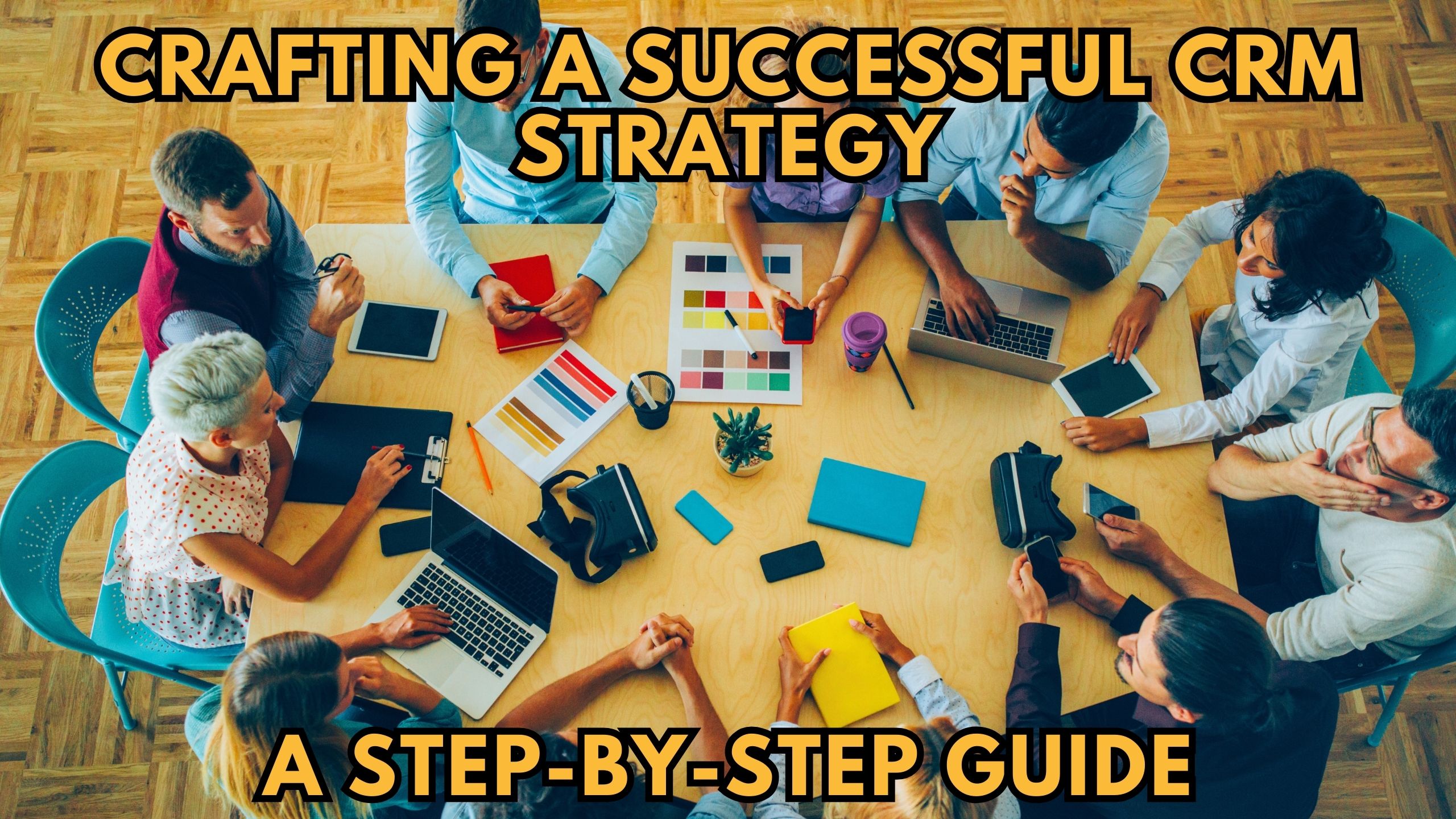Crafting a Successful CRM Strategy: A Step-by-Step Guide
- Expense Management Software Credit Cards Investing Business Solutions


Crafting a Successful CRM Strategy: A Step-by-Step Guide
In the dynamic realm of business, a well-crafted Customer Relationship Management (CRM) strategy serves as the bedrock for sustainable growth. This comprehensive guide provides a step-by-step approach to creating a successful CRM strategy, ensuring organizations leverage their CRM systems to their full potential.
Understanding the Fundamentals of CRM Strategy
A successful CRM strategy is more than just implementing a software solution; it involves aligning business objectives with customer-centric approaches. The first step in crafting a winning CRM strategy is understanding the unique needs and goals of the organization. This includes defining the target audience, specifying desired outcomes, and aligning CRM efforts with broader business objectives.
Step 1: Define Your Objectives and Metrics
Begin by clearly defining the objectives of your CRM strategy. Whether it’s improving customer retention, increasing sales, or streamlining communication, having specific and measurable goals is crucial. Identify key performance indicators (KPIs) that align with these objectives, allowing for ongoing assessment and optimization.
Step 2: Understand Your Customer Journey
A successful CRM strategy revolves around understanding and optimizing the customer journey. Map out the various touchpoints a customer has with your business, from initial awareness to post-purchase interactions. This comprehensive view enables organizations to tailor CRM processes to enhance customer experiences at every stage.
Step 3: Select the Right CRM System
Choosing the appropriate CRM system is a critical step in the success of your CRM strategy. Each CRM software has its unique features, strengths, and suitability for different business needs. Here’s an in-depth exploration of the SaaS products highlighted in this step:
1. Salesforce
Scalability: Salesforce is renowned for its scalability, making it suitable for businesses of all sizes. Whether you’re a small startup or an enterprise-level organization, Salesforce can adapt to your evolving needs.
Comprehensive Suite: Salesforce offers a comprehensive suite of tools, covering sales, marketing, customer service, and more. This all-in-one approach ensures that all aspects of customer interaction are seamlessly integrated.
2. HubSpot CRM
User-Friendly Interface: HubSpot CRM is known for its user-friendly interface, making it accessible to users at all levels of technical expertise. The intuitive design enhances user adoption and contributes to a smooth transition for teams.
Robust Reporting: HubSpot CRM provides robust reporting capabilities, allowing businesses to gain valuable insights into their customer interactions. Analytics and reporting are essential for making data-driven decisions.
3. Zoho CRM
Data Accuracy: Zoho CRM places a strong emphasis on data accuracy. For businesses that prioritize the quality of their data, Zoho’s features help maintain a clean and reliable database.
User-Friendly Features: Zoho CRM combines advanced capabilities with user-friendly features, making it an ideal choice for organizations seeking efficiency without sacrificing ease of use.
4. Pipedrive
Sales Pipeline Management: Pipedrive specializes in sales pipeline management. This focus directly impacts lead conversion rates, making it an excellent choice for businesses placing a premium on revenue growth.
Intuitive Design: The platform’s intuitive design streamlines the sales process, ensuring that sales teams can manage their pipelines efficiently and with minimal friction.
5. Freshdesk
Customer Support Features: Freshdesk is distinguished by its robust customer support features. For organizations prioritizing responsive and effective customer service, Freshdesk provides the tools necessary for quick response and issue resolution.
Efficient Response Times: Freshdesk’s capabilities contribute significantly to reducing response and resolution times, enhancing overall customer satisfaction.
Step 4: Implement and Customize
Once the CRM system is selected, ensure a smooth implementation process. Customize the platform to align with your specific objectives and workflows. This includes configuring fields, automating processes, and integrating with other relevant tools for a seamless operation.
Step 5: Train Your Team
The success of a CRM strategy heavily relies on the team’s ability to effectively use the system. Provide comprehensive training to ensure users are proficient in navigating the CRM platform and utilizing its features to maximize productivity.
Conclusion
Crafting a successful CRM strategy is an ongoing process that requires adaptability and a commitment to continuous improvement. By aligning CRM efforts with business goals, understanding the customer journey, selecting the right CRM system, implementing customizations, and providing adequate training, organizations can unlock the full potential of their CRM strategies.
Supercharge Your CRM Experience with Subscribed.fyi: Your Ultimate SaaS Solution Hub
Elevate your CRM strategy with Subscribed.fyi. Sign up for free today to access exclusive deals, saving over $100,000 per year on 100+ SaaS tools. Effortlessly manage all your subscriptions in one centralized platform, empowering your business for unparalleled efficiency.
Relevant Links:





